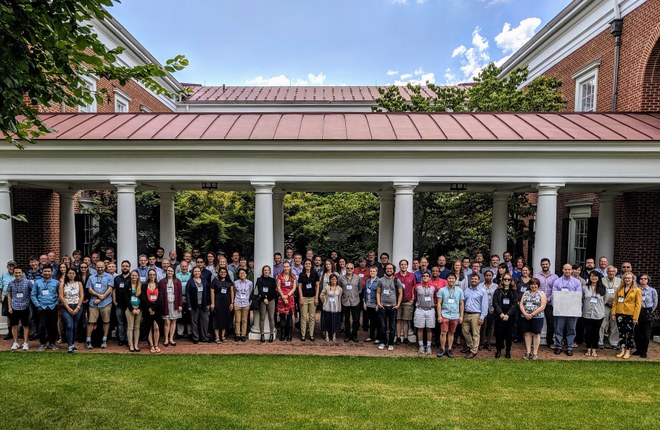Radio/mm Astrophysical Frontiers in the Next Decade


Download ngVLA19 Oral Abstract Book
Download ngVLA19 Poster Presentation Book
Event Overview
This workshop is intended to review the astrophysical frontiers identified in the Science White Papers submitted to the Astro 2020 Decadal Survey. A particular focus will be on those science frontiers that demand observations at centimeter and/or millimeter wavelengths across all Astro 2020 thematic areas. It is anticipated that a broad range of innovative ideas and approaches will be described, and that this workshop will allow those ideas to be explored in view of the current and forthcoming facilities, notably including the next-generation Very Large Array (ngVLA). The program will be designed primarily around contributed presentations highlighting science frontiers and potential observations with the ngVLA. Such observations will additionally be discussed in the broader context of multi-wavelength and multi-messenger astronomy.
Contributions from early career researchers will be especially welcomed.
The ngVLA is projected to proceed into a detailed design and development phase starting in 2020. The ngVLA Science Advisory Council and the National Radio Astronomy Observatory (NRAO) aim to ensure that the ngVLA will be capable of making the measurements required to fulfill the community’s vision for radio wavelength astronomy over the next decade and beyond.
We anticipate there being a modest amount of travel support for students and those in need upon request.
Details of the Program
Suggested Topics for Presentations:
- Areas where the radio/mm observations will have the highest scientific impact and synergy with facilities at other wavelengths, including multi-messenger astrophysics.
- New or updated Science Use Cases based on Astro2020 Science White Papers, noting their key supporting technical requirements and whether they are satisfied by the current ngVLA Science Requirements.
- Detailed simulations of the array’s performance, demonstrating the sufficiency or potential shortcoming of the current reference design for achieving the highest priority ngVLA science goals.
Prior to the workshop, the current ngVLA Science Requirements and simulation tools will be made available to participants so they can investigate whether the array performance meets their expectations. As an outcome of the workshop, we would like feedback highlighting areas where the Science Requirements need refinement for the Conceptual Design phase of the project.


